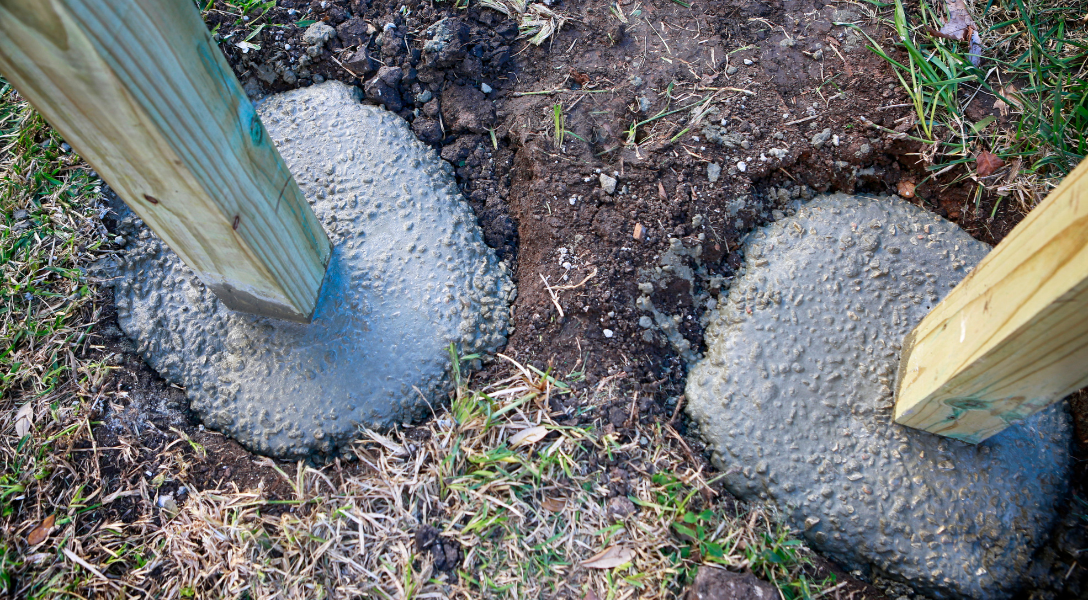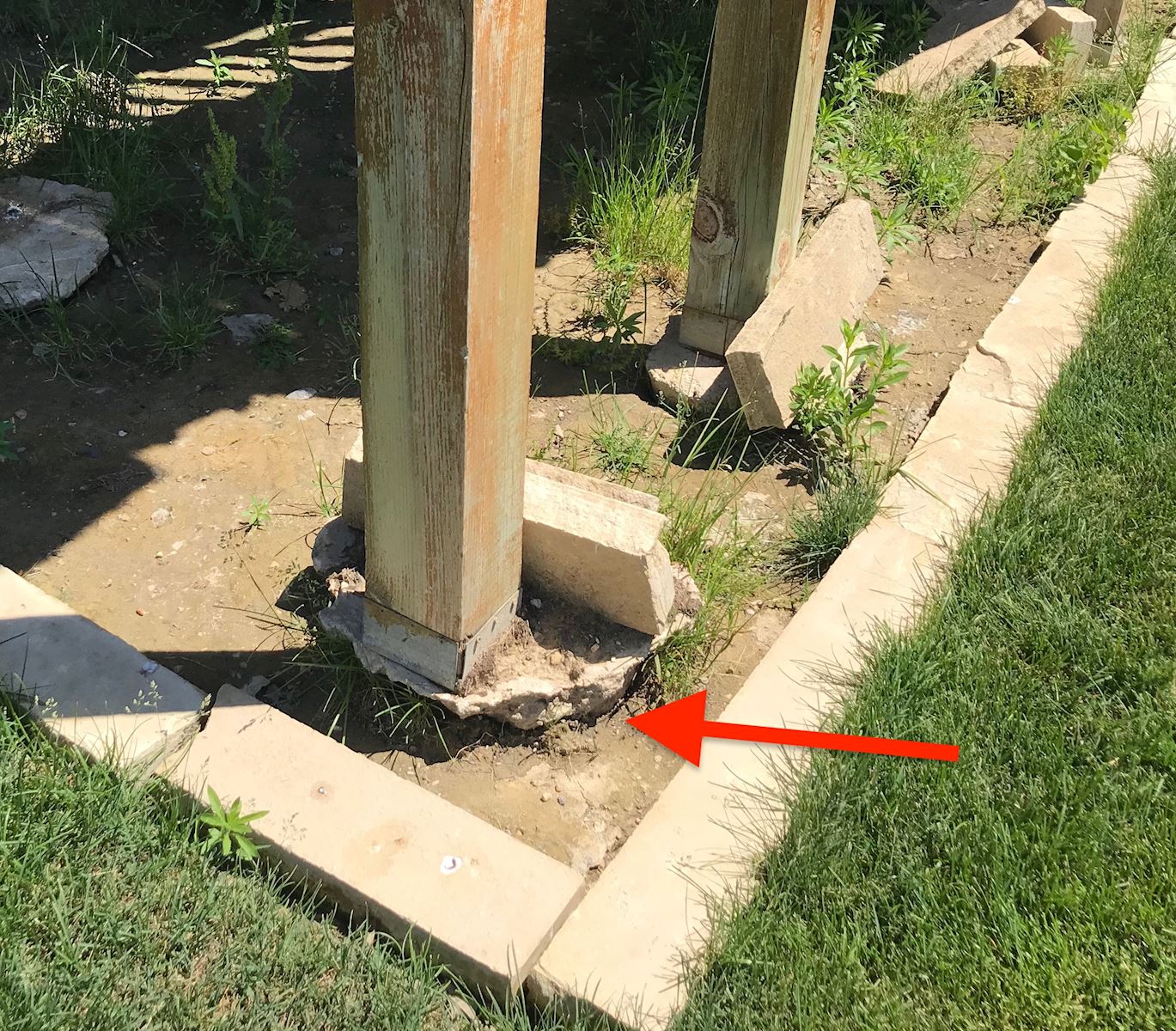From Concept to Concrete: The Important Function of Deck Footings in Sturdy and Safe Decks
Expert Tips for Setting Up Deck Footings to Assistance Your Outdoor Area
When it pertains to developing a deck, among one of the most important elements to think about is the installment of correct grounds. These grounds are the structure whereupon your outside room will rest, giving security and assistance for years to find. Yet what precisely does it take to mount deck grounds appropriately? In this discussion, we will certainly explore skilled pointers and techniques that can assist guarantee a effective and sturdy deck installation. From choosing the ideal sort of footings to staying clear of typical errors, we will certainly give you with the knowledge and understandings you require to with confidence start your deck-building journey. So, let's dive right in and uncover the trick to a strong and long-lasting exterior room.
Importance of Proper Deck Footings
Proper deck footings are crucial for making certain the security and longevity of your outdoor space. Without solid and appropriately installed footings, your deck may come to be unsteady, leading to safety hazards and pricey repair work.

In enhancement to security, correct deck grounds also add to the longevity of your exterior area (Deck Footings). Footings that are made and built to stand up to the aspects and soil problems in your area will certainly assist avoid the deck from shifting or resolving over time. By ensuring the grounds are correctly sized and mounted, you can lessen the danger of damage to the deck structure, extending its life expectancy and reducing the demand for expensive repairs or substitutes

Choosing the Right Kind Of Footings
When selecting the ideal sort of footings for your deck, it is very important to consider elements such as dirt conditions, local building ordinance, and the overall layout of your outdoor space. The kind of footing you select will certainly play an important duty in making certain the security and long life of your deck.
One usual sort of footing is the concrete ground. Concrete grounds are ideal for most soil problems and provide superb support for decks. They are generally mounted below the frost line to avoid moving and clearing up because of cold and thawing cycles. An additional option is helical piers, which are optimal for areas with unstable dirt or high water tables. These piers are screwed into the ground and give solid support for the deck.
In many cases, you might require to utilize specific footings, such as heap grounds or deep foundations, if you are building a huge or multi-level deck. These grounds are designed to distribute the weight of the deck over a bigger location, making certain stability and stopping sinking or clearing up.
Before choosing a kind of ground, it is vital to get in touch with regional structure codes and laws to guarantee conformity. Furthermore, consider the style and meant use of your outside area. Variables such as the size, shape, and load-bearing needs of your deck will influence the kind of footing that is most ideal.
Preparing the Ground for Footing Setup
To appropriately prepare the ground for footing installment, it is necessary to analyze the dirt conditions and take necessary steps to ensure security and durability of the deck. The initial step is to dig deep into the area where the footings will be mounted. The deepness of the excavation will certainly depend upon the frost line in your region and the certain requirements of the deck style. It is important to remove any type of greenery, rocks, or particles from the excavation to make certain a solid structure.
Once the area has actually been excavated, the following step is to portable the soil. This can be done making use of a plate compactor or by utilizing a hand tamper. Condensing the dirt assists to eliminate any voids or air pockets, which can cause settling and instability with time.
After condensing the visit the site dirt, it is necessary to lay a layer of gravel or crushed rock at the end of the excavation. This will certainly provide water drainage and help to stop water from merging around the grounds, which can cause disintegration and instability.
Step-by-Step Guide to Installing Deck Footings
After correctly preparing the ground for footing setup, the next action is to begin the process of mounting deck grounds. This step-by-step guide will provide you with a clear understanding of exactly how to mount deck footings for your exterior space.
Determine the location: Start by marking the placements of the deck footings using risks and string. Make certain that the areas straighten with the design and layout of your deck.
Dig the openings: Make use of a post opening miner or an auger to dig the openings for the footings. The deepness and size of the holes need to remain in conformity with neighborhood building codes and the details demands of your deck design.
Level the openings: Make use of a degree to make sure that the holes are dug to the proper depth and are degree with each various other. (Deck Footings)
Add crushed rock: Location a layer of crushed rock at the end of each hole to improve water drainage and protect against the wood from rotting.
Place the footings: Put the grounds right into the openings, ensuring they are level and plumb. Make use of a degree and a determining tape to make certain precision.
Safeguard the grounds: Put concrete right into the holes around the footings, loading them to the top. Utilize a message level to guarantee the footings continue to be level as the concrete sets.
Enable time for treating: Allow the concrete wikipedia reference remedy according to the maker's guidelines before waging the deck building.
Common Mistakes to Prevent Throughout Footing Setup
One crucial element to think about throughout the setup of deck footings is avoiding typical errors that can compromise the stability and longevity of your exterior room. While deck grounds might appear like a easy and straightforward component of the building process, ignoring certain variables can cause expensive repairs and prospective safety and security risks down the line.

Additionally, ignoring to install correct water drainage measures can create water to accumulate around the grounds, leading to rot, degeneration, and the eventual weakening of the deck's structure. Utilizing the incorrect type of footing product or stopping working to appropriately secure the grounds can endanger their architectural integrity.
To prevent these blunders, it is vital to seek advice from a professional or comply with industry guidelines to guarantee appropriate ground installation. By doing so, you can guarantee the stability and long life of your exterior room, supplying a pleasurable and risk-free atmosphere for years ahead.
Conclusion
In conclusion, setting up appropriate deck grounds is essential for the security and long life of your exterior room. By picking the right kind of grounds and sufficiently preparing the ground, you can Find Out More make sure a strong structure for your deck. Adhering to a step-by-step guide and avoiding common errors during footing setup will better improve the longevity and safety of your deck.
Correct deck footings are important for making sure the stability and durability of your exterior area. The grounds serve as a connection in between the ground and the deck, allowing the weight of the deck and its owners to be spread uniformly into the dirt.One typical type of ground is the concrete ground. Insert the grounds: Position the footings into the openings, making sure they are level and plumb. Safeguard the grounds: Put concrete into the openings around the grounds, filling them to the top.